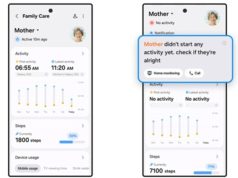While many have embraced the short and sweet nature of Twitter’s 140-character limit, the restriction can be something of a pain. So last year, Twitter made a few changes to help you express more with less. For example, it’s now possible to quote a retweet without it affecting your character count, and you can attach images and polls without worrying about the restraint as well. Today, Twitter is introducing yet another change: you can now reply to someone or a group of people without those @usernames taking up precious space.
Essentially, this means that the username of the person you’re replying to will now appear above the tweet text rather than in it. If you’re replying to a group of people, the header will show the number of other folks in the conversation. So if you’re responding to three people, the text will be “Replying to @username and 2 others.” To see who else is in the conversation, you can tap on the “Replying to” text to see a checklist of names. If you don’t want certain people in the discussion anymore, you can simply uncheck them and continue on.
However, if you want to add or tag other people to the conversation, you will still have to type in their @usernames manually just as before and that will take up your character restriction. Still, once they’re added, you won’t have to @ them again. As for how many people you can add to a Twitter convo, we hear that the feature can accommodate up to 50 people.
The company has experimented with this feature for a few months now, with varying success. A recent test used real names instead of usernames, which annoyed some users, while another one made it impossible to see who else was in the conversation. This update, however, resolves those issues, and seems to be a reasonable solution for those who don’t want usernames cluttering up their tweets.
“Our work isn’t finished,” said Twitter in a statement. “We’ll continue to think about how we can improve conversations and make Twitter easier to use.” You’ll see this update roll out starting today on the web and on both iOS and Android.






